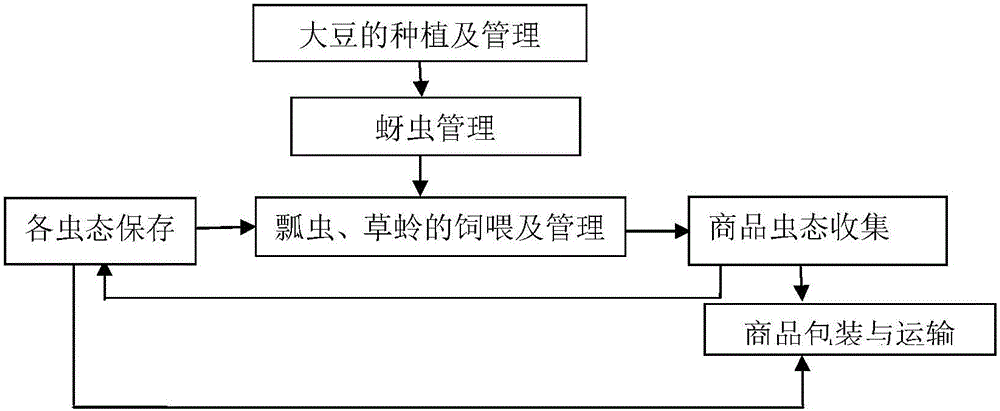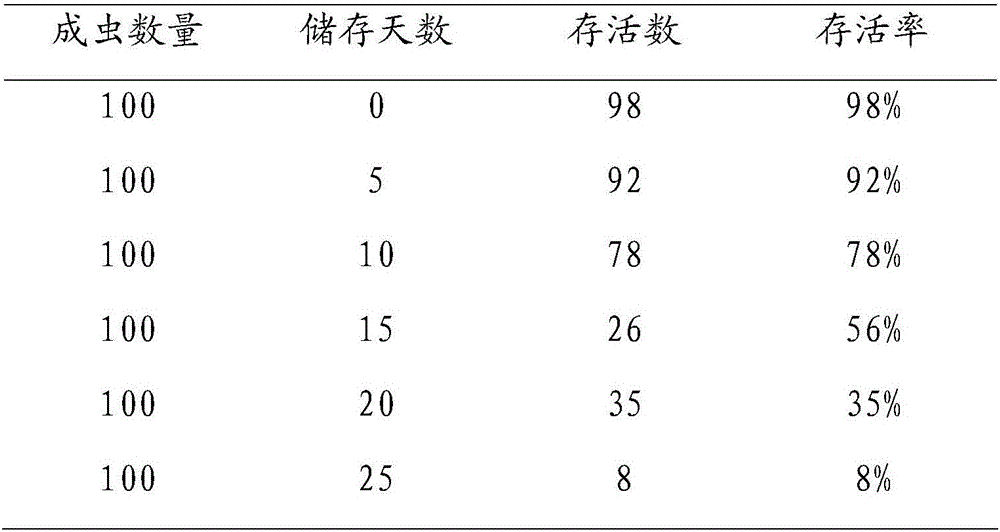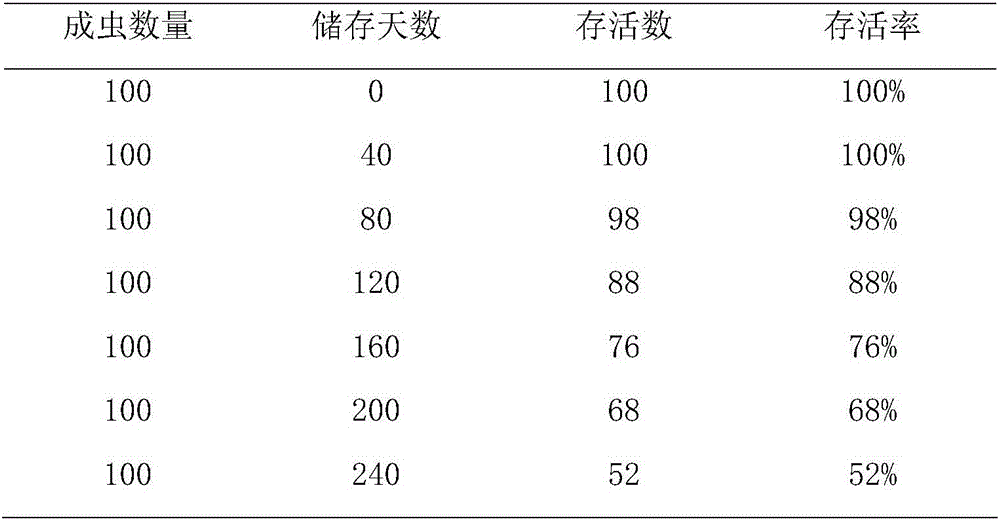Large-scale feeding and storage method of aphids and predators of aphids
A technology for aphids and natural enemies, which is applied in the adjustment field of commercial lady beetle adult storage, can solve the problems of difficult control of natural enemy insects, large resistance interference of host plants, and difficulty in guaranteeing temperature and humidity, so as to improve the level of scientific management and enrich biological control. Means, no seasonally dependent effects
- Summary
- Abstract
- Description
- Claims
- Application Information
AI Technical Summary
Problems solved by technology
Method used
Image
Examples
Embodiment Construction
[0039]For further elaborating the technical means and effect that the present invention takes for reaching the intended purpose of the invention, below in conjunction with preferred embodiment, the structure of the present invention, work flow are described in detail as follows:
[0040] A method for large-scale breeding and storage of aphids and their predatory natural enemies, the method comprising the following steps:
[0041] The first step, utilizing soybean as host plant to raise soybean aphid, soybean aphid is used for raising ladybug, method is as follows:
[0042] 1. Cultivation of host plants
[0043] Select Jidou No. 10 or Jidou No. 12 as the host plant for breeding soybean aphids, and use any soybean in the above two soybeans as a host plant for aphid cultivation to carry out large-scale breeding of aphids. The specific methods are as follows:
[0044] Put new or sterilized vermiculite into a plastic box with a specification of (length, width, height) 32×24×10cm a...
PUM
 Login to View More
Login to View More Abstract
Description
Claims
Application Information
 Login to View More
Login to View More - R&D
- Intellectual Property
- Life Sciences
- Materials
- Tech Scout
- Unparalleled Data Quality
- Higher Quality Content
- 60% Fewer Hallucinations
Browse by: Latest US Patents, China's latest patents, Technical Efficacy Thesaurus, Application Domain, Technology Topic, Popular Technical Reports.
© 2025 PatSnap. All rights reserved.Legal|Privacy policy|Modern Slavery Act Transparency Statement|Sitemap|About US| Contact US: help@patsnap.com



